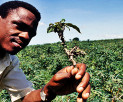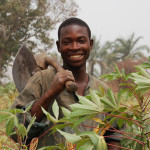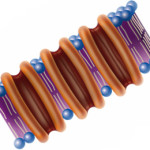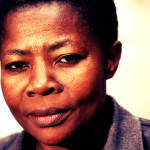Scientist saves lives with plant selfies
It is not a Hollywood story. As a young boy, Ernest Mwebaze did not look out over the destroyed cassava crop of his parents and decide that one day, he would bring an end to the disease. Instead, the idea grew during his PhD research, which he successfully defended last Friday.
- ‘When the harvest is lost, these people have nothing’, explains Mwebaze. // Photo International Institute of Tropical Agriculture
Ernest Mwebaze seized the opportunity to work on a combined project hosted by the University of Groningen and Makare University in Uganda. ‘The western world has all the theory while there are problems to which the theory applies in Africa’, explains Mwebaze. During his PhD project, he developed software to help farmers who grow cassava plants in Uganda to easily identify disease in their crops.
Diseases spread quickly
Almost three-quarters of the population in Uganda live off of the cassava harvests, many of whom are smallholding farmers cultivating approximately half an acre. ‘When the harvest is lost, these people have nothing’, explains Mwebaze. ‘No money for their kids, wife – nothing’.
It has happened in the past, and diseases can spread quickly. Agriculture experts can inspect the plants for disease, but that is easier said than done. ‘There are just a few of them, they have limited resources and they have to travel far: it is not an easy system.’
Mwebaze developed a smartphone app which allows the smallholding farmers to check whether or not their plant is sick on site. It is as simple as taking a picture with your smartphone: using the software, the photo is checked for obvious signs of sickness.
Database of sick plants
To get it done, Mwebaze first had to train an algorithm to recognize the symptoms by creating a database of sick plants. ‘We went to farmers to find sick plants and took them back to the laboratory to take pictures. The algorithm we created needed to recognize simple sickness features, such as decolorized spots on the leaves.’
- ‘We asked the agriculture experts to test the system by taking the phones on their trips’ // Photo International Insitute of Tropical Agriculture
The next step was to test the software by using pictures from the plants out in the fields. During this part of the experiment, Mwebaze noticed that one of the significant problems was not necessarily technical, but social. ‘We asked the agriculture experts to test the system by taking the phones on their trips and comparing the results with their findings. However, they were often quite busy and resources to trial the system in the field were not readily available because of bureaucratic red tape.’
Algorithm recognizes sick plants
In spite of resistance, the pilot was successful: the algorithm recognizes the sick plants. And over time, the system continue to improve. ‘When you upload the pictures to a server, the database grows and the algorithm continues to learn, becoming more accurate over time’.
With the Bill and Melinda Gates Foundation supporting his work, Mwebaze will soon start testing the system with low-cost smartphones which are given to the smallholding farmers. He is passionate about pursuing his goal for the project. ‘I hope that the livelihoods of smallholding farmers in Uganda will improve from my work and that they will no longer suffer from a bad harvest.’
To make that happen, Mwebaze will continue to develop his algorithm. The next step may be to study the light that comes through the leaves of the plant. This will tell whether the plant is sick before it actually shows signs of sickness. ‘We want to detect the disease before the eye can see it’, Mwebaze explains. With a smartphone, that may soon be possible.








